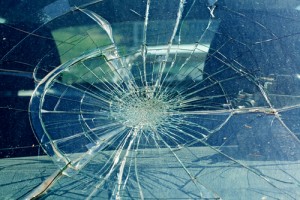Car Accident Tips: 7 Things You Might Not Know

In Everett this past November, two SUVs were involved in a crash that left at least four people seriously injured. According to authorities, three children involved in the collision were not wearing seatbelts and, along with one of the adult passengers, were thrown from the vehicle. The other SUV’s driver took off before police arrived, and they were unable to find the person after searching.
The complex nature of this accident brings several questions to mind. What are you supposed to do after a car accident? What consequences might you face? How do serious collisions such as these occur, anyway? The following points might answer some of these questions and bring you up to speed on other accident facts you didn’t know.
1. Unrestrained victims are often thrown from vehicles. The above accident highlights the potential risks of not wearing a seat belt. According to the Centers for Disease Control and Prevention, people who don’t wear seat belts are 30 times more at risk of being ejected in a collision than those who are restrained. Roughly three-fourths of these victims are killed.
2. What you do after an accident might earn you unnecessary criminal charges. As this recent example shows, you could be charged with a crime related to a crash if you leave the scene before exchanging information and speaking with police if they are called. Whether or not the cause of the crash was intoxication, the driver could now face additional charges for the hit-and-run.
3. More drivers are uninsured than you might think. The Insurance Research Council states that about 16 percent of drivers in Washington State don’t have auto insurance. If you’re hit by an uninsured driver, he or she may be financially liable for your injuries but collecting that money can often be challenging. We advise everyone to carry underinsured motorist coverage through their own insurance company so they will have prompt access to the money they need following a wreck caused by an uninsured driver.
4. Top factors that contribute to crashes in the U.S. Drunk driving and speeding have long been among the top three most dangerous driving behaviors. Thanks to the increasing use of cellphones and other technology, distracted driving takes the top spot for fatal accident causes.
5. Weather-related crashes are not limited to winter. Weather hazards are responsible for a large portion of car crashes. In addition to snow and ice in the winter, you may encounter fog and rain any time of the year, as well as glare from the sun – especially in the early mornings or evenings.
6. Be careful what you say after a crash. You may think you’re being polite to say that you’re sorry an accident occurred, even if you were not at fault. However, apologizing may be seen as an admission of guilt, and this is something you want to avoid.
7. Additional ways to protect yourself. You can take steps to protect yourself in case you are injured. For example, it may be useful to emergency personnel if you include a document listing your medical information, important phone numbers and allergies to medications, in your glove compartment with your insurance and registration. Some cell phones also have features that let you store personal medical information in a way the first responders can access at the scene of a wreck. It is also a good idea to keep an updated living will among your important papers so your family and doctors will know about your care preferences in case you are incapacitated.
An experienced Everett personal injury attorney is a great source of advice after you have been injured in a car wreck.
